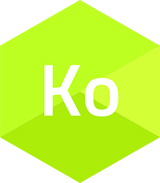Grafenoxidbelagda fiber för bättre kemisk beständighet hos glasfiberarmerad plast
Syfte och mål
Projektets syfte var att belägga konventionella fibrer till kompositer med grafenoxid (GO) för att öka motståndskraften mot fluorvätesyra (HF). Fyra olika typer av fibrer bekläddes med GO och användes i två olika typer av kompositer. Efter exponering visade sig att GO i sig hade utmärkt motståndskraft mot HF samt bra vidhäftning till syntetiska fibrer, men sämre vidhäftning mot glasfiber. För syntetiska fibrer ledde GO-beläggning till bättre skjuvstyrka (vidhäftning) mellan PE och glasfiberkomposit (FRP) efter HF-exponering jämfört mot icke GO-beklädd fiber.
Resultat och förväntade effekter
En ökad av vidhäftningsförmågan mellan härdplast och termoplast tack vara GO-modifiering av fibrer har kunnat uppvisas i labbet. Med tanke på den risk för delaminering som finns i konstruktioner för HF-hantering på grund av termoplastens permeabilitet så öppnar en förbättrad vidhäftning och motståndskraft möjligheten för bättre produkter. Att GO-beläggning kan göras på mindre områden öppnar även upp för att tillverka mindre serier av specialiserade laminat mot HF samt ytterligare en marknad för företag som belägger fibrer med GO.
Upplägg och genomförande
Projektets upplägg fungerande på det stora hela bra. Ett initialt arbetspaket borde dock ha lagts in för att screena hur väl vidhäftningen av GO var mot olika typer av fibrer. Här spelar troligen ytmodifikationer (silaner) från själva fibertillverkningen en väldigt stor roll hur väl beläggningen av GO vidhäftar och i sin tur hur väl GO kan skydda fibern. En betydligt bättre vidhäftning kunde nu observeras för syntetiska fibrer jämfört med glasfibrer, men med tanke på glasfibrers större känslighet för HF hade effekterna av en lyckad GO-beläggning troligen varit större.

